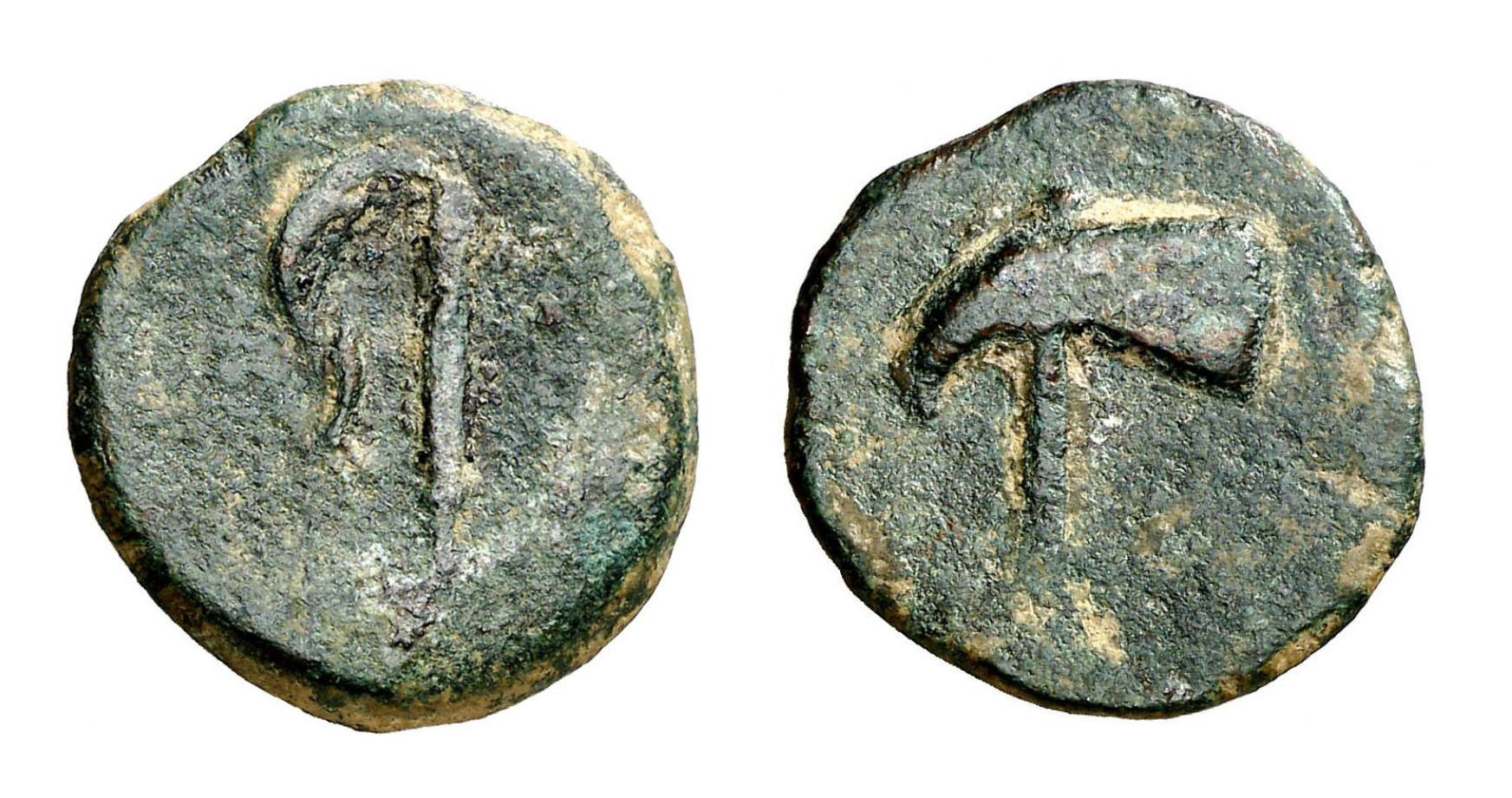
Recent research has attributed a number of 'monetary pieces', traditionally described as uncertain, to Carthago Nova. The study was published in the prestigious journal Revue Numismatique 178 (2021), published by the Société française de Numismatique (Paris).
The list of numismatic types is thus extended, thus becoming part of the rich monetary heritage of Cartagena. This study has been carried out by Dr. David Martínez Chico, researcher and member of our research group (GRAM). In his study he concludes that it is an issue of monetary teapots with aspergillum (aspersorium) on the obverse and securis (axe) on the reverse. His study has made it possible to link this material, which has been known for years, with the city of Carthago Nova. The proposed dating, evidenced by metrology, ranges from the end of the 1st century BC to the beginning of the 1st century AD. In addition, the unpublished finds that have been incorporated have allowed us to ratify the proposed location. On the other hand, the circulation of the pieces has been documented in Valencian territory; one piece appeared in Sagunto Castle. In addition, the Museu de Prehistòria de València acquired another a few years ago. Regarding the numismatic nature of the pieces, which were made of bronze, Dr. Martínez Chico concluded that it is more correct to
to identify them as teasers and not as new quadrants or semis of Carthago Nova. The metrology may correspond to that of a somewhat heavy quadrant or to that of a semi that has been reduced in weight. One of the most convincing facts, when interpreting these pieces, is the absence of a magistrate in charge of the issue or even the name of the colony itself, as is the case in the form of an abbreviation - C(olonia) V(rbs) I(ulia) N(ova Carthago) - on the anonymous series with Minerva and statue on pedestal (RPC I 151).
Apart from the strict numismatic study of the pieces, which is already relevant in itself, the fact of linking some of the finds to Carthaginian sites related to the springs that may have supplied Carthago Nova through its aqueduct.
The fact of linking some of the finds with the Carthaginian sites related to the springs that may have supplied Carthago Nova through its aqueduct, allows us to profile the contribution as extremely novel in Archaeology. In this sense, Dr. Martínez Chico suggests disassociating the Carthaginian teapots from mining, an important activity which has served to explain the issue of monetary pieces, as is the case with the "monetiform leads". This is definitely a subject that has been questioned and nuanced in recent years.
This and other questions have been dealt with in the aforementioned article: Martínez Chico, D. (2021): "Téseras mineras del sureste hispano o nuevos cuadrantes de Carthago Nova?", Revue Numismatique 178, pp. 137-160.
Images:











